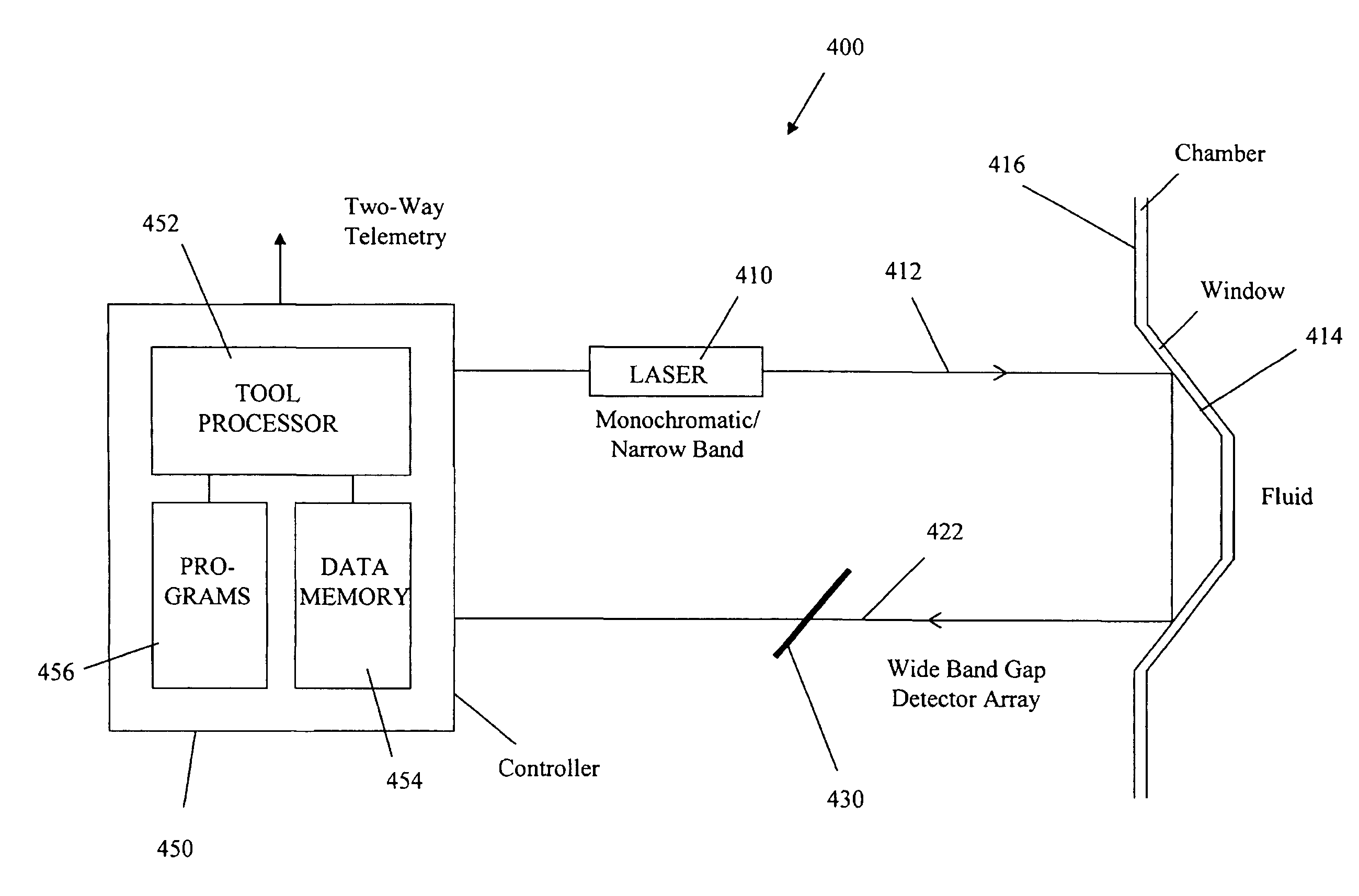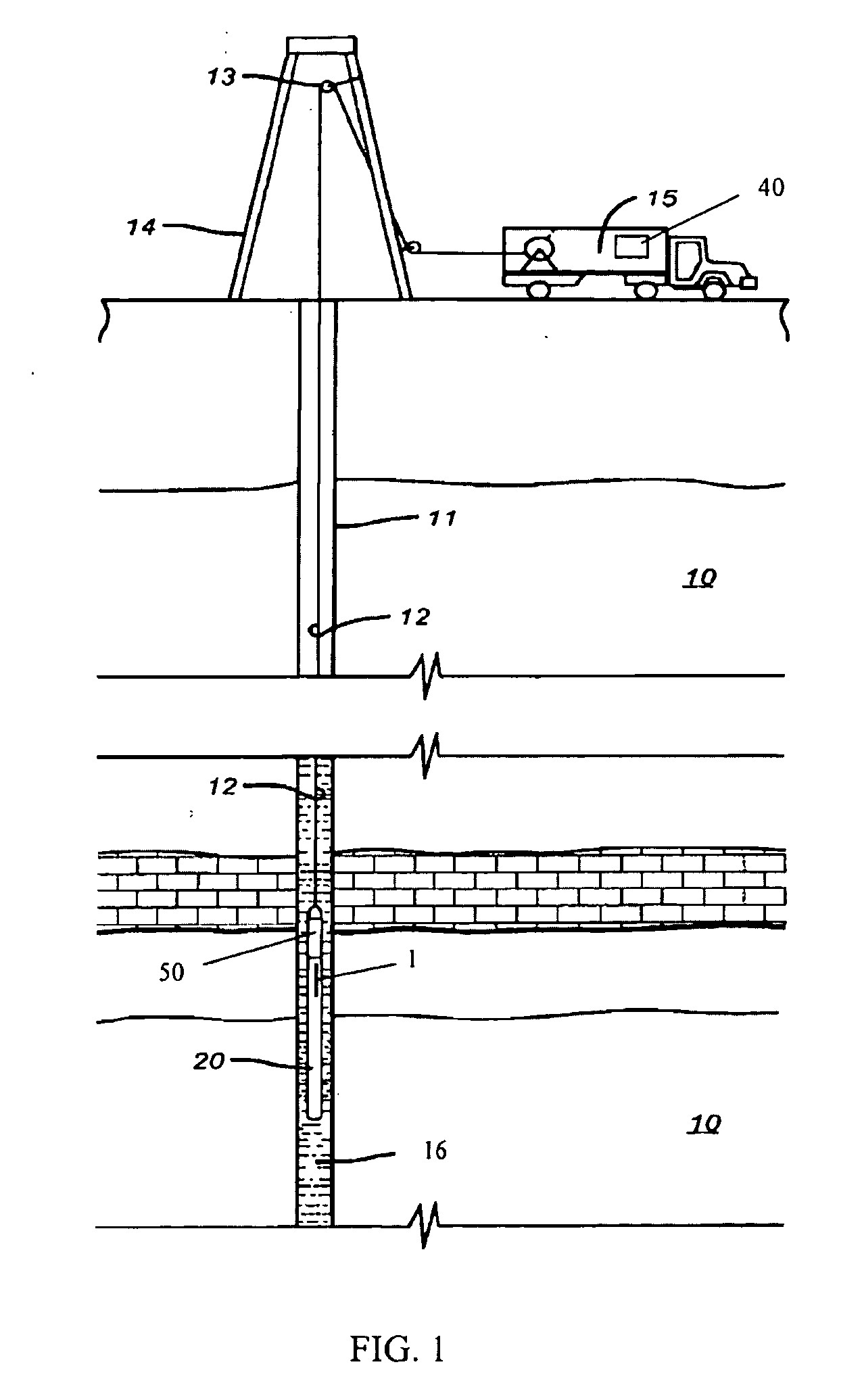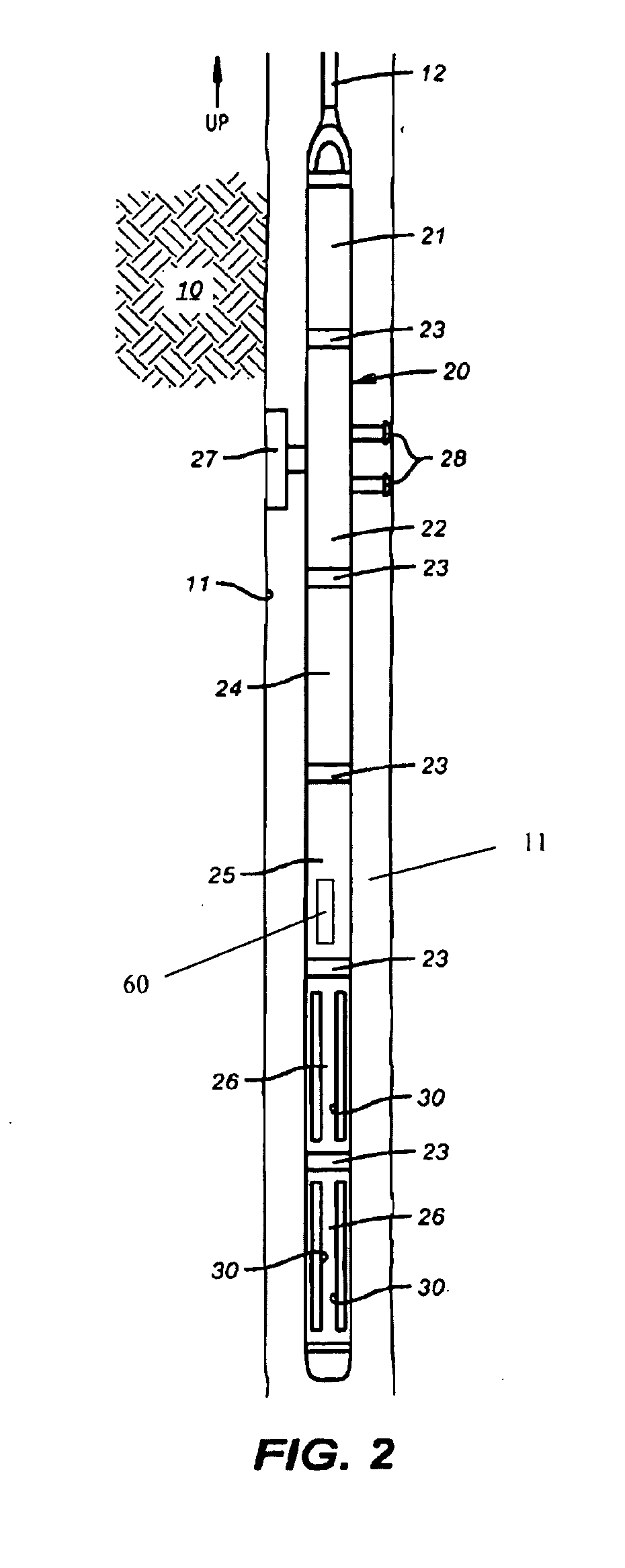Apparatus and method for estimating filtrate contamination in a formation fluid
a technology of formation fluid and filtrate, applied in the field of estimating the property of fluid downhole, can solve the problem of contamination of wellbore, and achieve the effect of enhancing the raman effect and the surface-enhancing raman
- Summary
- Abstract
- Description
- Claims
- Application Information
AI Technical Summary
Benefits of technology
Problems solved by technology
Method used
Image
Examples
Embodiment Construction
[0019] The embodiments herein, in one aspect, provide apparatus and methods for estimating a property of a fluid downhole. In another aspect, apparatus and methods for estimating a property of a fluid downhole using Raman spectroscopy are provided. In another aspect, apparatus and methods for estimating a property of a fluid using surface enhanced Raman spectroscopy are provided.
[0020]FIG. 1 is a schematic representation of a cross-section of an earth's subsurface along the length of a wellbore 11 drilled in the formation 10. Usually, the wellbore is at least partially filled with a mixture of liquids 16, including water, drilling fluid (mud) and formation fluids that are indigenous to the earth formations penetrated by the wellbore 11. The fluid mixture in the wellbore is referred to herein as the “wellbore fluid.” The term “connate fluid” or “natural fluid” herein refers to the fluid that is naturally present in the formation, exclusive of any substantial mixture or contamination...
PUM
| Property | Measurement | Unit |
|---|---|---|
| wavelength | aaaaa | aaaaa |
| wavelengths | aaaaa | aaaaa |
| wavelengths | aaaaa | aaaaa |
Abstract
Description
Claims
Application Information
 Login to View More
Login to View More - R&D
- Intellectual Property
- Life Sciences
- Materials
- Tech Scout
- Unparalleled Data Quality
- Higher Quality Content
- 60% Fewer Hallucinations
Browse by: Latest US Patents, China's latest patents, Technical Efficacy Thesaurus, Application Domain, Technology Topic, Popular Technical Reports.
© 2025 PatSnap. All rights reserved.Legal|Privacy policy|Modern Slavery Act Transparency Statement|Sitemap|About US| Contact US: help@patsnap.com



